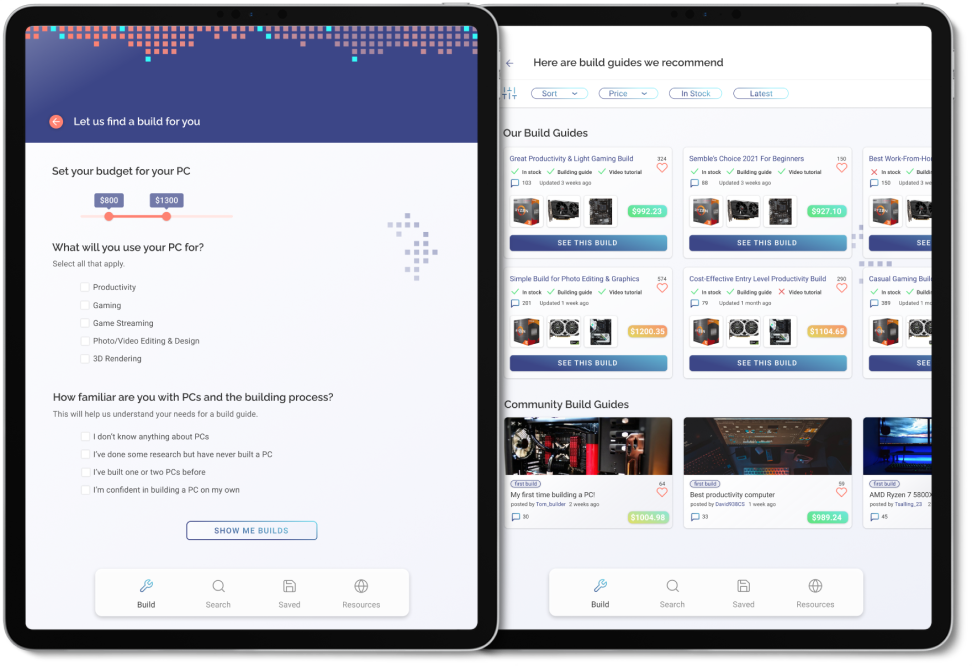The current process of custom PC building takes a lot of money, time and effort. Faced with the technical barriers of getting started, beginners can find it intimidating to get into. Semble bridges the learning gap for beginner PC builders by providing recommendations, resources and building guides.
ROLE
Research, Ideating,
Designing, Prototyping
DURATION
10 weeks
(Apr 2021 - Jun 2021)
TOOLS
Adobe Photoshop,
Figma, InVision
DEFINING THE PROBLEM SPACE
I started the project by conducting preliminary research on custom PC building and found that on average, this is what it takes to build your first PC:
RESEARCH & UNDERSTANDING THE USER
As someone who was not an expert PC builder, I needed to learn about others' experiences and thoughts.
I interviewed two groups of 3 participants for a total of 6 interviewees. I categorized them as such: (1) those who have already built their first computer and (2) those who have never built a computer, but were interested in building one.
HYPOTHESIS
I believe that there is an opportunity to improve the learning curve for beginner PC builders and that streamlining the building process can help them spend less time and money.
HERE'S WHAT I LEARNED
I was able to identify 3 reoccurring themes of concern that my interviewees spoke about.
5 of 6 interviewees also mentioned Technical Knowledge as the biggest barrier to getting started.
"There is a lot to consider... how do I know if the parts I pick fit together or if the brand is the right one?"
DEVELOPING A PERSONA
To better understand my user, I consolidated all of my findings into creating a Persona and a User Journey Map to better visualize their pain points and needs.
THE FUTURE OF SEMBLE
When considering how Semble can integrate into the market, I also explored a responsive a marketing website and a tablet version of the app. The purpose of the marketing website is to drive the authenticity and core message of Semble to the audience in that anyone who wants to build a PC is capable of doing so.
I chose a table to explore as an alternative platform for users who might want a bigger screen to be able to see more information about the builds.

CHECK OUT THE LATEST PROTOTYPE
REFLECTION
I needed to become an expert to design for others.
As someone who wasn't a computer expert, I knew going into this project that I would have to conduct a lot of research to be able to create a viable product that could help beginners. Here are the challenges I faced:
Learning as I go; I myself didn't know a lot about the compatibility of parts so I had to do a lot of research and learning throughout
Simplifying; the earlier stages of Semble was more complex as I was excited about the app's potential, but I realized that less was more
Virtual testing; due to the pandemic, I was only able to conduct tests virtually and some nuances of the app's functionality could have been missed
I realized that designers are often tasked with having to adapt to new problem spaces whenever they take on a project. When designing with users in mind, we need to be responsible for learning as much as we can about the space so that we are familiar with the problem and how it can be addressed. I also learned to appreciate the process and even scrapping something I worked hard on was to contribute to the most ideal version of Semble.




